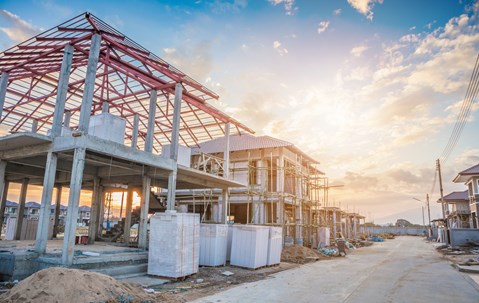News & Tips

Three Simple Ways We Can Lower Building Costs And Improve Affordability
For more than four years, beginning in early 2020 when COVID-19 reached our shores, the Australian home building industry has faced a series of challenges that have tested the industry, consumers, and government.
The impact on supply has been especially pronounced.
Less than 164,000 new homes commenced construction in 2023. This was the lowest volume of housing starts in over a decade and around a third less than the 240,000 required each year to meet the Australian Government’s target of 1.2 million new homes over the next five years.
It is becoming readily apparent that the 1.2 million new homes target will not be made and that, quite possibly, we will fall well short.
The residential construction sector continues to face many challenges. Some of these challenges are long-standing while others are relatively recent.
In particular, the combination of higher interest rates and higher costs have created the perfect storm affecting both the supply and demand for new homes. Although progress is being made on both the inflation and costs, there is some way to go.
Despite construction cost growth slowing from recent record highs, new dwelling construction cost remain high.
This is, in part, due to the residential construction sector competing with non-residential construction and the large infrastructure pipeline.
The latest ABS Producer Price Index (PPI) data showed that the value of outputs of the home building industry (completed dwellings) rose by 1.0% in the quarter, up 4.3% over the year, due to a range of factors including skilled worker labour shortages, higher prices for some materials (e.g. concrete based structural components) and high manufacturing costs.
Of course, the cost of building a new home is just one element of the cost of a traditional house and land package, with the supply constraints on land also contributing to price increases and the affordability challenges we are seeing.
The Housing Industry Association (HIA) recently noted that land supply is re-emerging as the main constraint on home building and we have previously highlighted some things that can be done to make land more affordable.
On the issue of building, decisions by governments across the country to increase taxes, fees and charges on home building have added to costs.
At the same time, new requirements under the National Construction Code (NCC) are also being rolled out, which, will add further costs to the cost of building a home.
Governments are increasingly aware of the challenges, unfortunately many were created by Government, and are taking some steps to put some sort of downward pressure on prices.
The Federal Government recently announced it will put around $11.3 billion towards housing as it works to meet its promise of 1.2 million new homes by 2030.
About $1 billion will be spent on crisis and transitional accommodation, while $9.3 billion will go to states and territories under a new five-year agreement to combat homelessness, assist in crisis support, and build and repair social housing.
While these investment decisions are much needed to alleviate the housing crisis, ensuring that resources are available to ensure the investments do indeed occur and that we can continue to put downward pressure on building costs, are also important.
Here are some ideas on how we can continue to ensure building costs are kept low.
Firstly, we need more skilled workers in the building sector. On this front, the government included nearly $90 million to cover the education costs of 20,000 construction workers. The government also hopes to find 4,500 migrants to help fill gaps in the industry by fast-tracking applications for those who have building and construction skills.
This is a good start, but the most crucial thing governments can do to free up workers for housing construction is wind back spending on massive infrastructure projects that soak up so many resources. In places like Victoria, where the budget is drowning in red ink, spending less on infrastructure will also ease the debt and deficit crisis.
The construction sector also needs to be the focus of migration policy. HIA analysis shows that despite the building industry commanding 9 per cent of the nation’s total workforce, builders haven’t been able to attract a proportionate share of the migrant workers who come to Australia. Correcting this bias would add tens of thousands of new workers to the sector and go some way to addressing the skills crisis.
Secondly, we need to look at innovative new building techniques that allow the construction of homes more quickly and more cost-effectively.
There are various ways we could achieve this. One example is increasing the share of homes which are prefabricated.
Less than 5 per cent of homes currently built in Australia are prefabricated, mainly because of the mish-mash of building and local regulations that make producing a one-size-fits-all model that can be mass-produced at an affordable price very difficult.
Customising each new home to fit local laws defeats the purpose and eliminates the efficiencies that make them affordable.
Creating a dedicated national code for modular housing and investing in new technologies could significantly enhance the speed and lower the cost of new modular homes.
Thirdly, we need a greater emphasis on improving supply chains for critical materials. The Federal Government’s flagship Future Made in Australia plan can’t be entirely focussed entirely on energy transition and the path to net zero.
We need investment, ideas and innovation in supplying the basics, like timber, bricks, plaster, cement and PVC. Lowering the cost and increasing the reliability of these products will do a lot to ensuring we keep construction costs low.
These are three very difficult things to do and will take time and resources to do. But they are essential if we are to lower building costs and tackle the affordability crisis in housing.
By Julian Coppini
Oliver Hume
CEO Project Marketing

